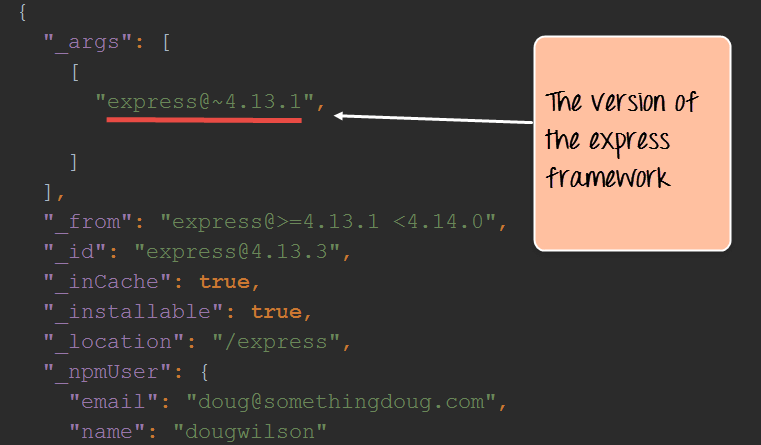The “package.json” file is used to hold the metadata about a particular project. This information provides the Node package manager the necessary information to understand how the project should be handled along with its dependencies.
The package.json files contain information such as the project description, the version of the project in a particular distribution, license information, and configuration data.
The package.json file is normally located at the root directory of a Node.js project.
Let’s take an example of how the structure of a module looks when it is installed via npm.
The below snapshot shows the file contents of the express module when it is included in your Node.js project. From the snapshot, you can see the package.json file in the express folder.

If you open the package.json file, you will see a lot of information in the file.
Below is a snapshot of a portion of the file. The express@~4.13.1 mentions the version number of the express module being used.

Summary
- A module in Node.js is a logical encapsulation of code in a single unit. Separation into modules makes code more manageable and maintainable for future purposes
- There are many modules available in the market which can be used within Node.js such as express, underscore, MongoDB, etc.
- The node package manager (npm) is used to download and install modules which can then be used in a Node.js application.
- One can create custom NPM modules, extend these modules, and also publish these modules.
- The Node package manager has a complete set of commands to manage the npm modules on the local system such as the installation, un-installation, searching, etc.
- The package.json file is used to hold the entire metadata information for an npm module.
